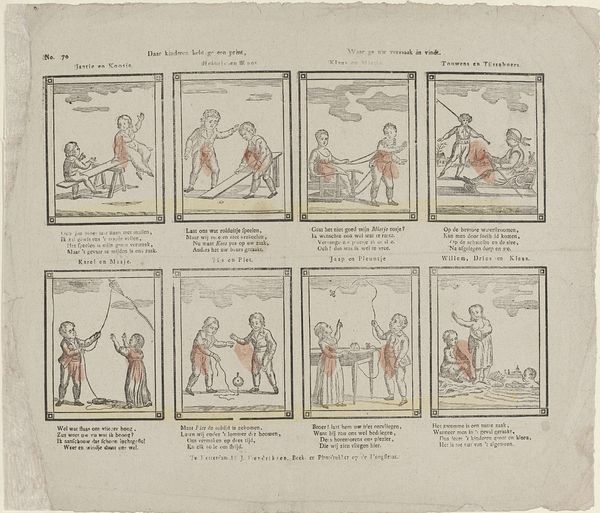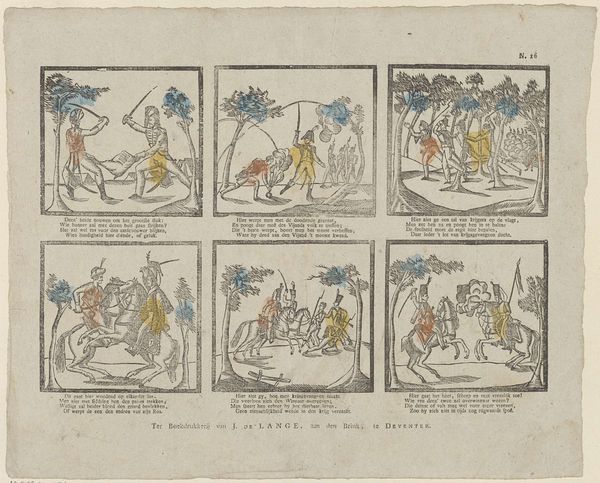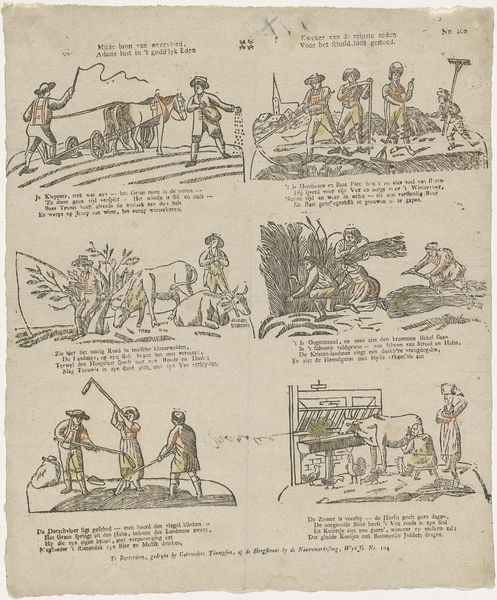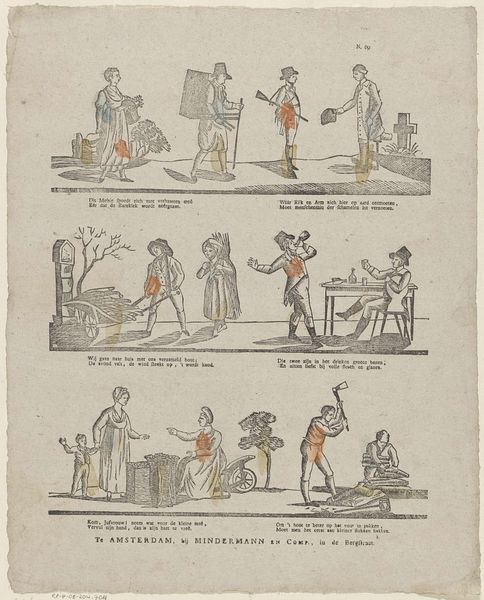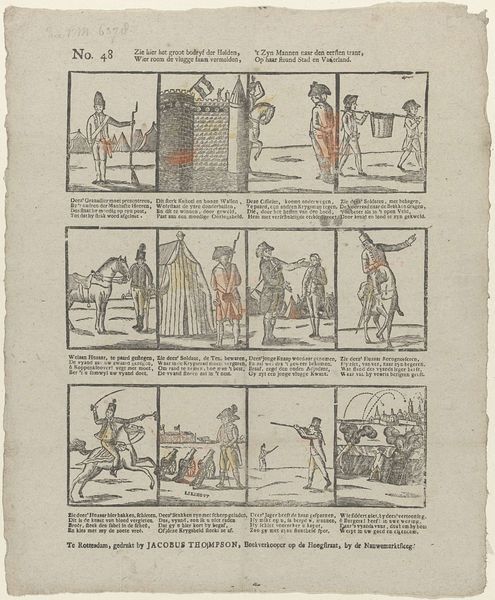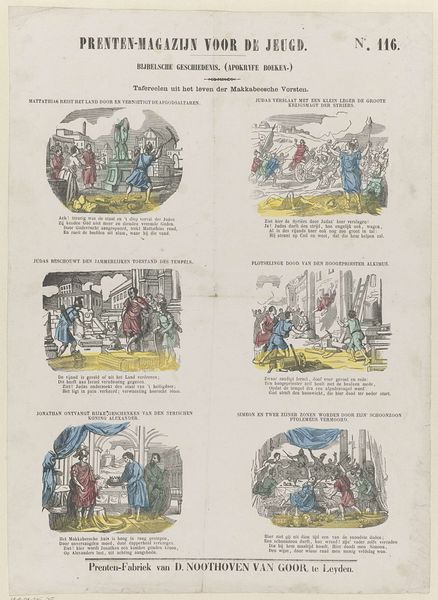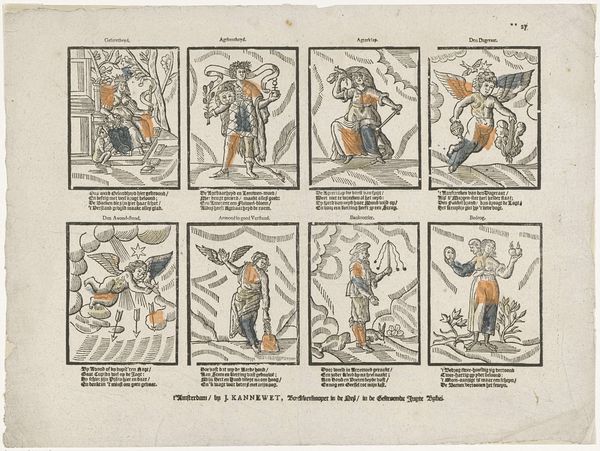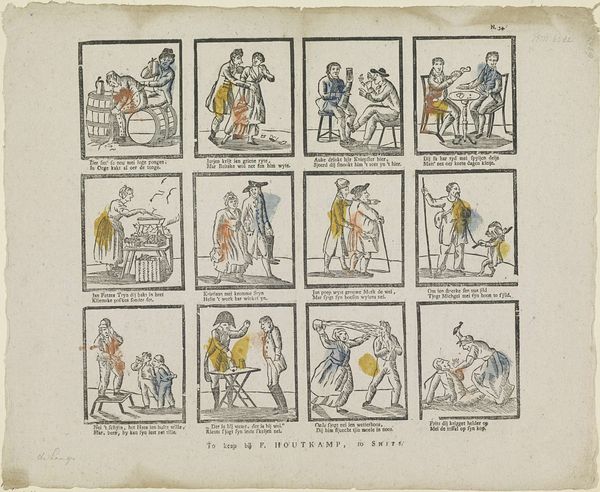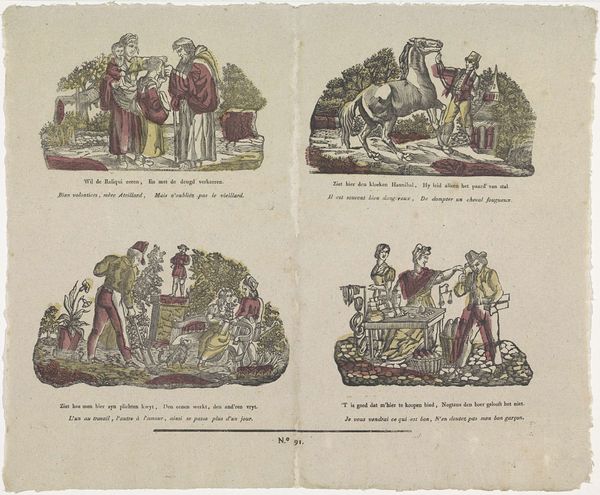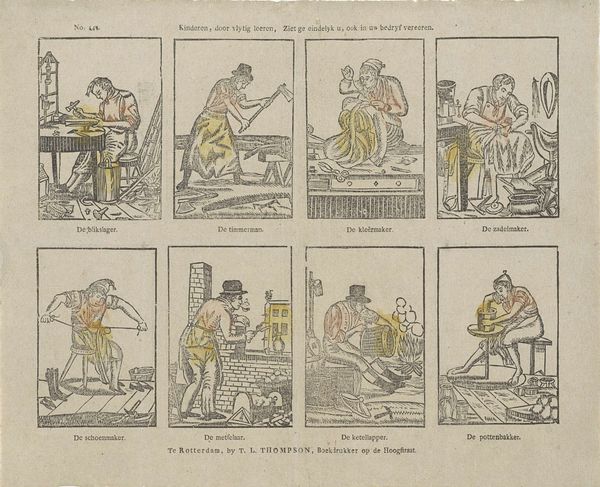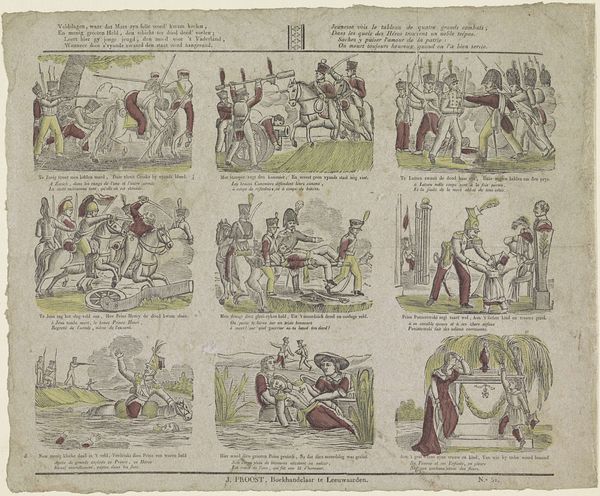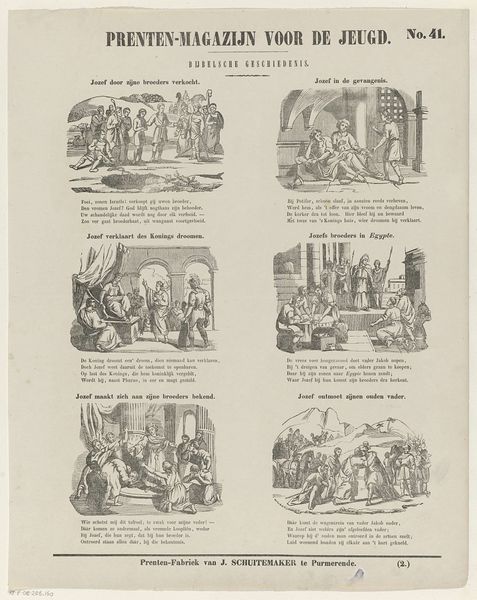
Verschillend werk, door 't brein des menschen uitgedacht, / En nut tot oefening der menschelijke kracht, / Vertoonen wij, o jeugd! hier weêr aan uw gezigt, / En wijzen u die aan in weinig reeglen dicht 1822 - 1849
0:00
0:00
print, paper, engraving
#
narrative-art
#
dutch-golden-age
# print
#
paper
#
genre-painting
#
engraving
Dimensions: height 328 mm, width 407 mm
Copyright: Rijks Museum: Open Domain
Curator: This engraving, attributed to I.I. de Lanier, is titled "Verschillend werk, door 't brein des menschen uitgedacht," dating back to between 1822 and 1849. It resides here at the Rijksmuseum. The print on paper presents a series of scenes, each seemingly depicting different facets of everyday life. Editor: My first impression? A slightly chaotic snapshot of 19th-century Dutch society, or at least a representation of it, with very stark and limited materials. The monochrome engraving feels… instructive, almost like a visual lesson. Curator: Precisely. These weren't necessarily conceived as "high art" in the traditional sense. Examining the engraving process itself and the use of readily available paper stock gives insight into its function. Prints like this were tools for dissemination and education accessible to a wider audience. Editor: That's where its socio-political punch comes in. Who was the target audience? Were these scenes idealized portrayals, or attempts to document realities? And how did institutions shape the content and circulation of this imagery? Curator: Well, the presence of accompanying text below each scene suggests a narrative purpose, likely aimed at younger audiences, given the instructive tone of the verse. It implies this wasn’t mere entertainment but intended as edification. The artist highlights specific activities. Look, on the lower left, you can see people are practicing fencing. Editor: So, the very act of disseminating this engraving serves a purpose. It is shaping and directing what can be deemed a socially productive behavior, or acceptable leisure practice. What role did publishers like Schalekamp play in this educational agenda? Curator: They were key. Mass production meant affordable imagery reaching homes, schools maybe, shaping perspectives on work, leisure, and community values. And the medium of print allows copies to spread wider than painting in terms of numbers, influencing public taste and promoting a visual language around Dutch identity. Editor: It all reinforces how profoundly cultural output and historical processes intertwine, reflecting values but simultaneously reinforcing and promoting them. Curator: Exactly, understanding the labor and distribution of these engravings contextualizes its cultural importance in society, far beyond merely aesthetic enjoyment. Editor: I now have a much more layered perspective of this fascinating and intriguing image that initially seemed, at first, rather unremarkable.
Comments
No comments
Be the first to comment and join the conversation on the ultimate creative platform.
